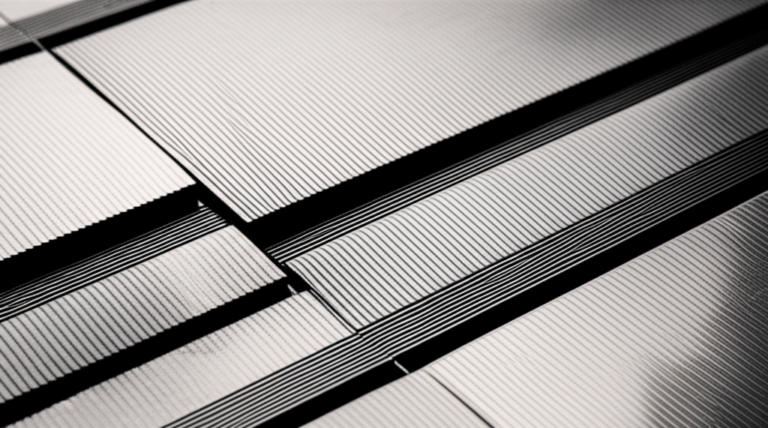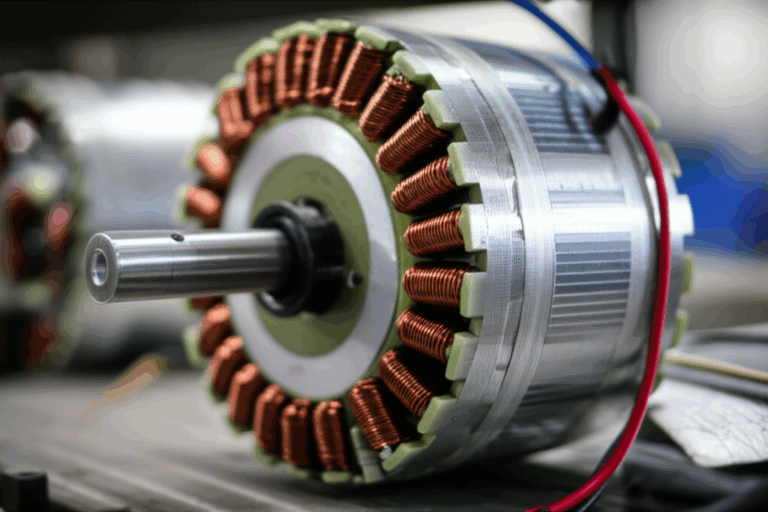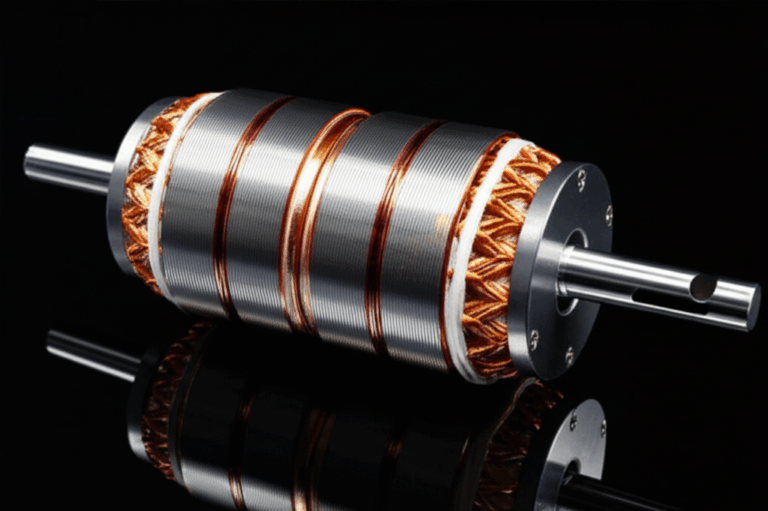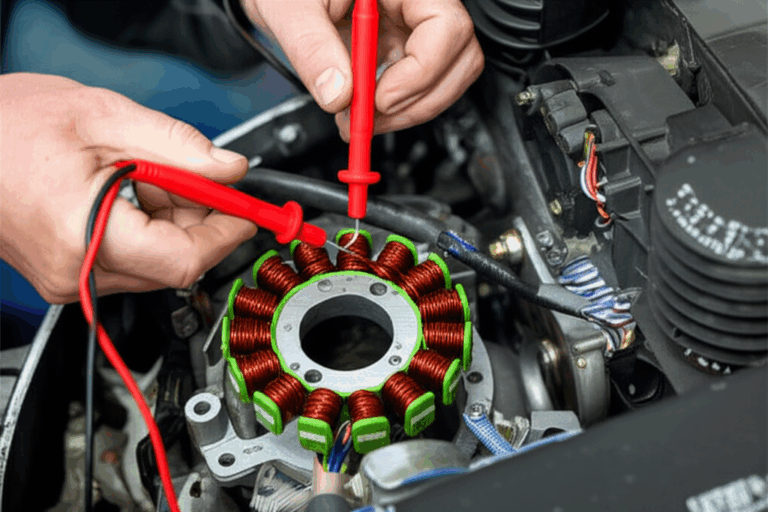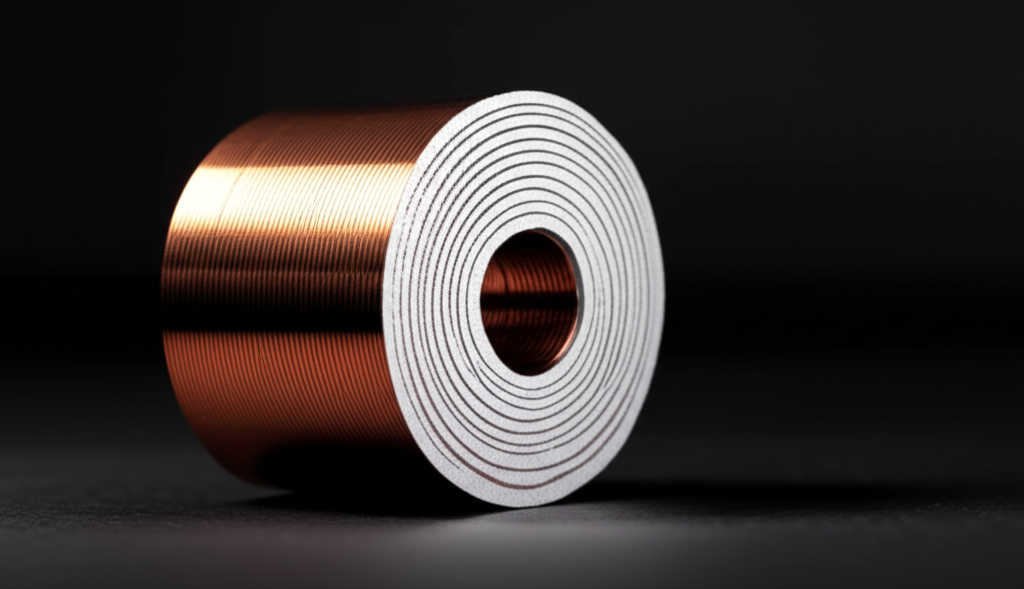
Why Is the Stator Core Laminated? Understanding Core Losses and Motor Efficiency
Table of Contents
- Why Is the Stator Core Laminated? Understanding Core Losses and Motor Efficiency
- What does a stator core do in a motor?
- What goes wrong with a solid core?
- What are eddy currents and why do they waste power?
- What is hysteresis loss and how does it heat the core?
- How do laminations fix the problem?
- Why does silicon steel cut hysteresis loss?
- How thick should laminations be?
- What materials and grades make sense?
- How do makers build a laminated core?
- How does lamination boost efficiency and life?
- What about the rotor and transformers too?
- How do design choices shape the flux path?
- How do frequency and flux change loss?
- What is the cost and ROI of lamination?
- Typical numbers you can use today
- Stories from the shop floor
- Buying guide: pick the right laminated core
- Related terms in plain words
- References
- FAQ
- Key takeaways
You want motors that run cool. You want power without waste. This article shows you why the stator core comes in thin sheets called laminations. I explain the problem, I agitate it with real pain points, then I show you a simple solution that works. You will see how laminations cut eddy current losses and hysteresis losses, how they raise motor efficiency, and how they protect windings from heat.
What does a stator core do in a motor?
Think of the stator core as a road for magnetic flux. It gives the magnetic field a low reluctance path. The path runs from the yoke through the teeth and across the air gap to the rotor. The stator windings sit in stator slots. When AC flows in those windings, an alternating magnetic flux rises and falls. That flux links with the rotor. The result is torque.
I like to picture flux lines as traffic. The core guides that traffic. Good electrical steel with high magnetic permeability keeps the traffic moving with low loss. Bad paths slow it down. Heat builds. Power drops.
What goes wrong with a solid core?
Here is the problem. A solid iron core looks strong. It is not smart for AC machines. The alternating magnetic field cuts the solid metal. Faraday’s Law says a changing magnetic flux induces voltage. Ohm’s Law says voltage makes current. So currents swirl inside the solid to make loops. We call them eddy currents. They waste power as Joule heating.
There is more. The iron does not flip its magnetic domains for free. Each cycle of magnetization and demagnetization costs energy. That loss is hysteresis loss. Add eddy current loss and hysteresis loss and you get total core loss. The core gets hot. The motor’s power factor falls. The insulation ages. The motor groans with noise and vibration.
Problem. Agitated. You can feel the heat.
What are eddy currents and why do they waste power?
Eddy currents are little loops of current induced in the core by the alternating magnetic flux. They flow in closed paths in the cross-sectional area of the core. They make heat by I²R loss. That is basic Joule heating. The faster the flux changes, the stronger the induced voltage. Higher frequency means higher eddy current losses.
A handy rule helps. Eddy current loss is proportional to the square of lamination thickness, the square of frequency, and roughly the square of peak flux density. In short words, thinner sheets help a lot. Lower frequency helps too. For high-frequency machines you must go thin.
What is hysteresis loss and how does it heat the core?
Hysteresis is the lag between magnetic field strength H and flux density B. The B-H curve traces a loop each cycle. The area of that loop is the energy lost per cycle per volume. Materials with high coercivity and high retentivity have wide loops. That means more loss and more heat.
You do not want that. You want a narrow loop. You want low coercivity and low retentivity. That is why motor designers pick special electrical steel. It flips domains with less work. That choice shrinks the hysteresis loop. The core runs cooler and the machine runs better.
How do laminations fix the problem?
Here is the solution. We slice the stator core into thin sheets called laminations. Each sheet has an insulating coating such as varnish or oxide. The insulation breaks the path for circulating currents. The electrical resistance between sheets goes up. The area for eddy current loops goes down. The eddy currents shrink.
You can see the physics. Faraday’s Law still induces a voltage in each sheet. Lenz’s Law still fights change. Yet the thin path stops big loops. Less current means less Joule heating. Eddy current loss drops hard. That is why we laminate. It is simple. It works.
Why does silicon steel cut hysteresis loss?
We do not stop with thin sheets. We also pick better material. Silicon steel, also called electrical steel, has high magnetic permeability and low coercivity. The silicon in the iron lowers hysteresis loss. It also raises resistivity which trims eddy currents even more.
I look at the hysteresis loop and smile when I see it narrow. The area of that loop tells me the energy lost each cycle. Use low loss grades and the loop area shrinks. The motor stays cool at the same flux density. That is the heart of reduced hysteresis losses.
How thick should laminations be?
Lamination thickness matters. Thinner laminations cut eddy current loss because loss goes with thickness squared. For standard power frequency motors, typical thickness runs from 0.35 mm to 0.65 mm. For high-frequency machines or generators, designers use 0.10 mm to 0.35 mm.
There is a trade. Very thin sheets lower loss yet raise cost. The stacking factor falls a bit because the insulation takes up space. Smart design picks thickness based on frequency, flux density, and cost.
What materials and grades make sense?
We choose between non-grain oriented electrical steel and grain-oriented electrical steel. NGOES is isotropic so it handles flux in many directions. That fits AC machines where flux rotates. GOES is anisotropic. It shines when flux flows in one direction such as transformers and some static magnetic circuits.
Steel makers tune grades for magnetic permeability, coercivity, retentivity, and core loss. Annealing relieves stress from punching or die cutting and restores magnetic domains. Better grades cost more. They pay back with lower core loss, higher efficiency, and less heat.
How do makers build a laminated core?
Makers punch or stamp thin sheets to the right tooth and yoke shape. They apply an insulating coating such as varnish or oxide. They stack sheets in a tool with care to keep the stacking factor high. They may rivet, bond, weld, or bolt the stack. Some stacks use interlocks. Many stacks get annealed to lower loss.
Slots hold stator windings. The slotting in the stator core shapes the flux path and the back EMF. The tooth and yoke design controls flux density and magnetic saturation. A good stack keeps flux density under the saturation point. It avoids magnetic fringing and flux leakage. That keeps the magnetic circuit balanced.
How does lamination boost efficiency and life?
Laminations reduce eddy current losses. Better electrical steel reduces hysteresis losses. Together they slash total core loss. That means less heat generation in electrical machines. Cooler cores protect windings and insulation. The motor lasts longer. Maintenance drops. Uptime rises.
Electricity not lost as heat turns into useful power. So energy efficiency goes up. Motors meet IE3 and IE4 efficiency standards. Plants cut energy bills. The environmental impact improves because lower energy use trims the carbon footprint.
What about the rotor and transformers too?
We laminate the rotor core as well. The rotor sees changing fields so eddy currents form in a solid rotor core too. Laminated rotor stacks in induction motors trim heating. In BLDC motors and synchronous motors, lamination helps with dynamic core losses and keeps torque ripple down.
Transformers also use laminated cores. Grain-oriented electrical steel lines up the flux path for low loss. EI cores and UI cores are common shapes. Laminations keep eddy current heating low at 50 or 60 Hz and much lower still for high-frequency transformers that use very thin sheets or even ferrites.
How do design choices shape the flux path?
Magnetic circuits in motors are like plumbing for flux. The yoke carries return flux. Teeth channel flux into the air gap. Stator slots alter the flux distribution and can change gap permeance. Designers balance tooth width and slot area. They check magnetic flux density to avoid magnetic saturation. They tune the flux path to lower magnetic reluctance.
Core geometry matters. Cross-sectional area, tooth tip shape, and the air gap length change the rotating magnetic field. Good geometry lifts motor performance improvement. Bad geometry hurts efficiency and raises noise and vibration.
How do frequency and flux change loss?
Core loss depends on frequency and flux density. Eddy current loss rises with frequency squared. Hysteresis loss rises roughly with frequency linearly. If you raise flux density, both losses jump. So high-frequency motor cores need thin laminations and premium grades.
Temperature also affects core losses. As cores warm, resistivity can change and so does magnetization behavior. Cooling requirements grow with heat. Designers add fans or better thermal paths to manage heat. That keeps power factor strong and efficiency high.
What is the cost and ROI of lamination?
Laminated cores cost more than solid steel. Silicon steel and NGOES or GOES grades carry higher price tags. Punching, die cutting, and insulation add cost. The stacking process and annealing add more.
Yet the ROI is clear. You save energy every hour the machine runs. Less heat saves the motor insulation system and bearings. Motors run longer, so you avoid downtime and repairs. Over the life of a motor, energy savings can dwarf the added material cost. In plants with many AC machines, the savings can reach millions of kWh per year.
Typical numbers you can use today
Here is a simple table with typical values. Real designs vary. These figures show trends.
| Metric | Solid Core (Unlaminated) | Laminated Core (Electrical Steel) | What it means |
|---|---|---|---|
| Eddy current losses | High, often most of core loss | Much lower, often a small share of total | Thin sheets break loops |
| Hysteresis losses | Moderate to high | Lower with silicon steel | Narrow loop saves energy |
| Total core loss | Very high | Lower by half or more | Cooler and more efficient |
| Motor efficiency | Often under 70% | 85% to 95% common | Wasted heat turns into power |
| Temperature rise | Large | Smaller by 20°C to 50°C | Protects windings |
| Power density | Lower | Higher by 10% to 30% | More output per size |
| Lamination thickness | N/A | 0.10 mm to 0.65 mm | Thinner for higher frequency |
For a clear rule of thumb, eddy current loss ∝ thickness² × frequency² × flux density². Hysteresis loss ≈ k × frequency × Bⁿ with n near 1.6 to 2 for many steels.
Stories from the shop floor
I once watched two similar motors run side by side. One had a solid core as a test. The other had a laminated stator core. The solid core motor ran hot to the touch within minutes. Its current draw climbed and its speed sagged under load. The laminated motor ran cool and steady. The test ended early because the solid core risked damage.
Here is another. A plant switched to premium NGOES laminations. Hysteresis loss dropped. The motors met IE3 efficiency. Energy use fell. The CFO smiled at the utility bill. The maintenance crew smiled because the motors stopped tripping on thermal limits.
Buying guide: pick the right laminated core
You can choose laminated cores that match your design and your goals. If you need stator stacks for standard AC machines, look at premium motor core laminations. If your project is a BLDC drive, study the tooth and yoke layout of a quality bldc stator core. If your focus is the fixed part of the machine, complete your design with reliable stator core lamination. If you also need the rotating part, match it with a stable rotor core lamination. For the material itself, compare grades and coatings of proven electrical steel laminations.
Problem. Agitate. Solution. If your motors run hot, if your costs rise, if your parts wear out, change the core. Thinner laminations, right coatings, and the right steel grade cut loss. You get efficiency standards compliance, strong EMC behavior, and long motor lifespan. You get peace of mind.
Related terms in plain words
You may see these terms in motor design. Here they are in simple words so you can spot them in specs and guides.
- Stator Core, Rotor, Windings, Teeth, Yoke, Stator Slots, Core Geometry
- Laminations, insulated laminations, bolted laminated core, welded laminated core, stacking laminations procedure, stacking factor
- Electrical Steel, Silicon Steel, electrical steel properties, silicon steel laminations, electrical steel grades
- Non-Grain Oriented Electrical Steel (NGOES), Grain-Oriented Electrical Steel (GOES), crgo lamination core, crngo lamination
- Alternating Current (AC), DC Machines, AC Machines
- Magnetic Flux, flux lines in laminated core, flux path, flux path interruption, magnetic reluctance reduction, magnetic flux leakage, magnetic fringing, gap permeance, magnetic saturation avoidance, saturation effects
- Magnetic Field, Magnetic Field Strength (H), Flux Density (B), magnetic permeability of steel, magnetic anisotropy
- Electromagnetic Induction, Faraday’s Law of Induction, Lenz’s Law, back EMF in motors, rotating magnetic field
- Eddy Currents, reduce eddy current losses, how laminations reduce eddy currents, cross-sectional area of eddy currents, eddy current heating, eddy current braking, eddy current formula
- Hysteresis Loss, hysteresis loop explanation, low coercivity and retentivity, hysteresis loss formula
- Core Loss, electromagnetic core losses, total core loss, static core losses, dynamic core losses, how core losses manifest, core loss calculations
- Heat Generation, Joule Heating, overheating prevention in motors, cooling requirements for motors, effect of temperature on core losses
- Motor Efficiency, impact of lamination on motor efficiency, energy efficiency in electric motors, power factor improvement, efficiency standards for motors
- Power Loss, Power (P), Energy (E), Frequency, high-frequency motor core, low-frequency transformer core
- Motor design considerations, design of electrical machines, material science in electrical engineering, fundamental principles of electromagnetism, applications of laminated cores
- Generator stator lamination, induction motor stator core, synchronous motor stator design, AC motor construction
- Stator winding placement, tooth and yoke design
- Annealing laminations, oxide coating for laminations, varnish coating for laminations, punching laminations, die cutting laminations, insulated laminations
- Advantages of laminated cores, disadvantages of solid cores, core loss reduction techniques
- Magnetic domains, coercivity, retentivity, hysteresis loop
- Voltage induced in core, current induced in core, Ohm’s Law
- Energy savings in industrial motors, environmental impact of motor efficiency, sustainable motor design, future trends in core materials, historical development of motor technology
- Electromagnetic compatibility (EMC), noise reduction in motors, vibration control in motors
- Cost implications of lamination, material cost, design optimization for motors, impact on motor lifespan, motor performance improvement
References
- IEEE Std 112. IEEE Standard Test Procedure for Polyphase Induction Motors and Generators.
- NEMA MG 1. Motors and Generators. National Electrical Manufacturers Association.
- IEC 60034 series. Rotating Electrical Machines.
- A. E. Fitzgerald, C. Kingsley, S. Umans. Electric Machinery Fundamentals.
- Manufacturer data sheets for NGOES and GOES electrical steel grades.
FAQ
Q: Why laminate at all if I can cool the motor with a fan
A: Cooling helps remove heat. Laminations stop the heat from forming in the first place. Less heat means higher efficiency and longer life.
Q: Do laminations help at low frequency like 50 Hz
A: Yes. Eddy currents still form at 50 Hz in a solid core. Laminations cut them. That is why transformers and motors at 50 or 60 Hz are laminated.
Q: When should I choose NGOES vs GOES
A: Use NGOES for motors where flux rotates. Use GOES for transformers where flux goes in one main direction.
Q: Will thinner laminations always be better
A: Thinner sheets cut eddy currents more. Cost and stacking factor matter too. Choose thickness to match frequency, flux density, and budget.
Q: Can laminations reduce noise
A: They can. Lower core loss means less vibration from magnetostriction and less heating that can warp parts. Good slotting and geometry help as well.
Key takeaways
- Laminations break eddy current paths so they slash Joule heating.
- Silicon steel with low coercivity narrows the hysteresis loop and cuts loss.
- Thinner laminations help more at higher frequency since eddy loss scales with thickness squared.
- Good stator design manages flux density to avoid saturation and to control flux leakage and fringing.
- Laminated stator and rotor cores raise efficiency, lower heat, and extend motor lifespan.
- Premium NGOES or GOES grades and proper annealing improve magnetic properties.
- Smart choices meet IE3 or IE4 standards and trim your carbon footprint.
- If your motor runs hot, solve the root cause with better laminations and the right electrical steel.
- For real projects, explore proven stator core lamination, match with a strong rotor core lamination, pick reliable motor core laminations, compare quality electrical steel laminations, and review advanced bldc stator core.

